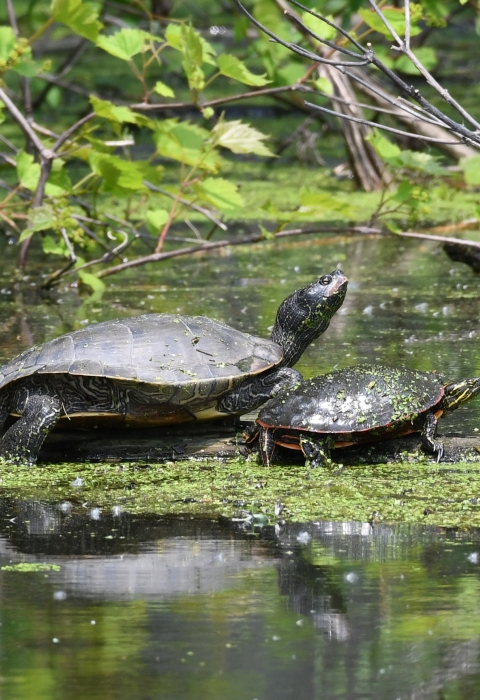What We Do
The National Wildlife Refuge System is a series of lands and waters owned and managed by the U.S. Fish and Wildlife Service. Wildlife conservation is at the heart of the refuge system. It drives everything we do from the purpose a refuge is established, to the recreational activities offered there, to the resource management tools we use. Selecting the right tools helps us ensure the survival of local plants and animals and helps fulfill the purpose of the refuge.
- Prescribed Fire
- Moist Soil Management
- Invasive Species Control
- Planting Trees to Restore Floodplain Forests
- People Management
Management and Conservation
Refuges use a wide range of land management tools based on the best science available. Some refuges use prescribed fires to mimic natural fires that would have cleared old vegetation from the land helping native plants regenerate and local wildlife to thrive. Other refuges contain wilderness areas where land is largely managed passively. The management tools used are aimed at ensuring a balanced conservation approach where both wildlife and people will benefit. At this field station our conservation toolbox includes:
Prescribed Fire
Prescribed fire is an important tool in the management of refuge lands. Grasslands and some types of wetlands routinely burned before European settlers altered the landscape. Fire suppression, agriculture and the creation of the levee and dam system have drastically altered the landscape. Restoration efforts on the refuge have restored some prairies, grasslands and wetlands. To keep them open wildlife managers, write a prescription for the land. When the weather conditions are just right, they can burn these areas to keep woody vegetation from taking hold and help to beat back some non-fire dependent invasive species invasive species
An invasive species is any plant or animal that has spread or been introduced into a new area where they are, or could, cause harm to the environment, economy, or human, animal, or plant health. Their unwelcome presence can destroy ecosystems and cost millions of dollars.
Learn more about invasive species .
Moist Soil Management
Situated in the floodplain on the Mississippi and Iowa Rivers, moist soil management activities are primarily focused on providing high quality habitat for migratory birds that live in wetland habitats. Low-level dikes, water control structures and pumps are used to mimic natural wet and dry conditions, which in turn provide food, cover and protection to birds during their annual migrations.
Invasive Species Control
Non-native and invasive species are plants or animals which have been transplanted on purpose or by accident to another region. Once there, they multiply quickly displacing the native plants or animals. Garlic mustard, bush honeysuckle, purple loosestrife, reed canary grass, white mulberry and Japanese hops are all examples of non-native and invasive species that are managed on the refuge by cutting, hand pulling and chemical treatment.
Planting Trees to Restore Floodplain Forests
The refuge is an ideal location for replanting floodplain forests. Silver maple trees dominate the floodplain forests. We hope that by planting a variety of native trees the forests will grow in diversity.
People Management
National wildlife refuges are where wildlife comes first. Every activity that people can participate in on the refuge has to be determined compatible with the reason the refuge was founded. Have you ever wondered why portions of the refuge are closed part of the year? Limiting access to the refuge during migration allows birds like wood ducks or mallards to rest and eat. Why can’t hunters use lead shot? Because birds and other wildlife may ingest the shot and get sick with lead poisoning. As you can see, we try to strike a balance between human users and undisturbed habitat for wildlife.
Law Enforcement
U.S. Fish and Wildlife Service law enforcement officers have a wide variety of duties and responsibilities. Ultimately our officers are here to help. Law enforcement issues should be referred to the deputy refuge manager or refuge manager. Or you can report a wildlife violation by calling 1-844-697-8477.
Laws and Regulations
Refuges are special places where wildlife comes first. All activities allowed on refuges must be evaluated to make sure each activity will not conflict with the reason the refuge was founded.
